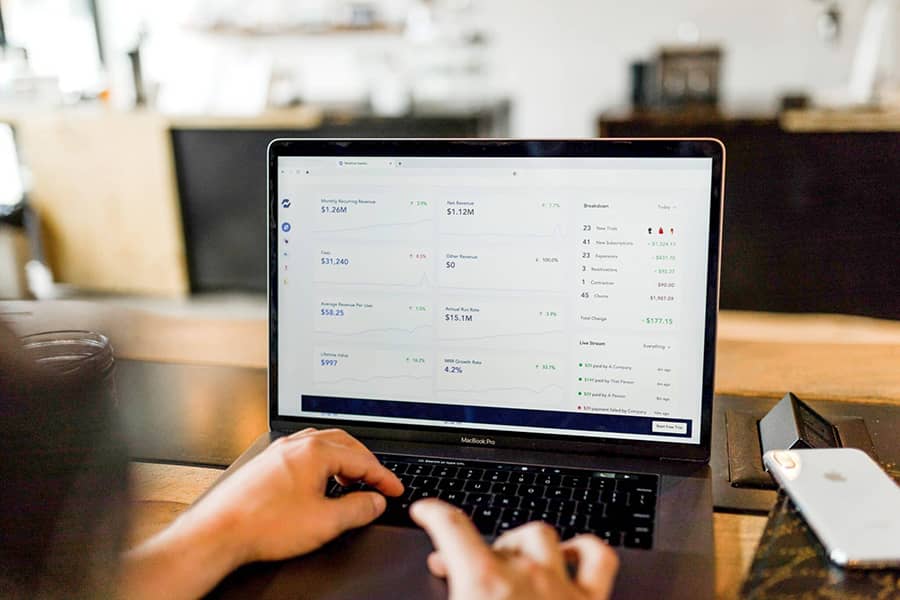A credit check at customer acceptance is valuable, but also immediately outdated. While the real credit risk only begins after you have accepted a customer. The solution: monitor the financial health of your customers in real time using up-to-date credit information, predictive indicators, scores and alerts. Discover the three advantages for your company.

Credit information is the foundation of your defense against credit risk. Not only is it the fuel for customer acceptance, but it also drives continuous monitoring of your customers' creditworthiness and payment behavior.
Why would you do that? Simple: once you have accepted a new customer, then the real risk starts. After all, you are going to deliver goods, provide money, rent out objects or do business in any other way for which it remains to be seen whether your customer will eventually pay for it. If he does not, you pay the bill yourself.
Credit check at customer acceptance is immediately obsolete
Customer Acceptance is beslist waardevol, maar zie het als een fotomoment. De achterliggende kredietcheck zegt alleen iets over het hier en nu. Omdat de financiële gezondheid van bedrijven continu verandert, is een kredietcheck per definitie meteen verouderd.
De oplossing? De financiële gezondheid van je klanten real-time monitoren aan de hand van actuele kredietinformatie en voorspellende indicatoren. Waarbij scores en alerts je helpen om tijdig te reageren op verslechterde – of juist aanzienlijk verbeterde! – kredietwaardigheid van je klanten.
The payment behavior of your customer is particularly important in monitoring. This is because, if all goes well, it is real-time data that tells you how a company is doing. The D&B Payment Score, also known as Paydex, provides an objective assessment of how quickly a company pays its invoices. The score is ultra current, because within the DunTrade Program Dun & Bradstreet receives daily payment experiences from independent companies.
Monitoring credit risk in practice
Want to get started with monitoring? First we plug your systems (CRM, ERP or whatever) into the Altares Dun & Bradstreet Data Cloud, the world's largest business database with records of more than 330 million companies worldwide.
Altares has real-time data on payment behavior, collection information, group structures, turnover figures and balance sheets. This data is processed in score models, from which a figure emerges for each client. This creates a business dossier of data, predictive risk indicators and scores on, for example, bankruptcy risks and payment behavior.
Are there any negative or positive changes within your customer portfolio? Then you will receive an alert about this. To put it bluntly: only current and high-quality data leads to the right alerts. That is why we use the DUNSRight™ quality process, which ensures the timeliness, completeness, reliability and consistency of data from our 30,000 global data sources.
How your business can benefit from monitoring
Do you have a continuous financial finger on the pulse of your customers thanks to up-to-date and high-quality data, thoughtful predictive indicators and smart scoring? That has three advantages.
1. Avoid losing money
At many companies, there is internal pressure to accept as many new customers and sell products or services as possible. Nice, until - too late anyway - the alarm bells start ringing because of non-payment. Thanks to monitoring, you can predict which customers will go bankrupt or encounter payment problems. You can then adjust the credit limit or insurance coverage. Or increase the price of your product or service on the basis of the risk.
2. More business because customers turn out to be bigger
An alert for increased credit? That means a sales opportunity! For example, increase the credit limit, giving sales more room to do business with a customer. It also means that this company is doing well, so there are more sales opportunities. By the way, do you involve your sales people in the credit check and monitoring? Then they will look more critically at new prospects and get a better idea of the risks and potential consequences for your organization.
3. Commercial opportunities and reduced risks through family structures
When monitoring, you can also look at the family structure around a customer. Family relationships can create risks, but they can also create opportunities. Think of a parent company that has issued a liability statement. Or a sister company of your client that is financially ill. It is crucial to have and maintain a clear picture of the family structure, especially in the case of international business structures.
An additional advantage: if you consult group structures, you may discover subsidiaries, branches or franchisees with whom you can also do business - and where you therefore already have a good entrance.
Are you interested in the possibilities of monitoring credit risk within your company? Then take a look at our credit risk management solutionsLike D&B Finance Analytics, our risk and portfolio management platform.
